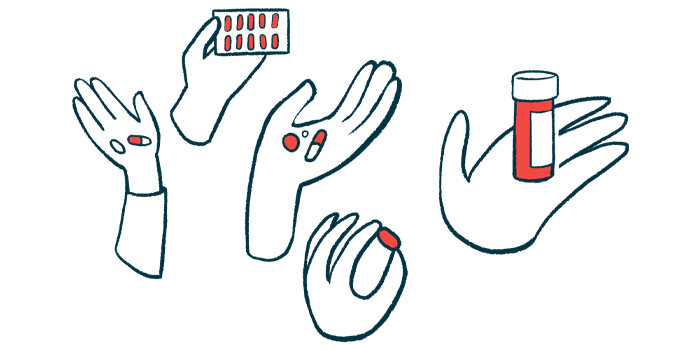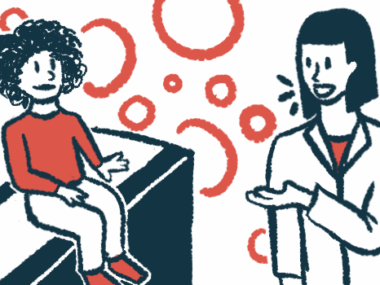Livmarli helps Alagille patients stop other anti-itch meds in real world
Data show Livmarli's potential to reduce burden of medications for children
Written by |

About one year of treatment with Livmarli (maralixibat) allows about a third of patients with Alagille syndrome to stop at least one other medication to manage itch, according to a recent real-world analysis.
Mirum Pharmaceuticals, the therapy’s developer, believes the findings indicate Livmarli can quickly reduce treatment burden for Alagille patients, who commonly require several medications to keep liver disease-associated itch, or pruritus, under control.
The findings were shared by Jolan Terner-Rosenthal, PhD, senior director of publications at Mirum, in an oral presentation at the recent 56th European Society for Paediatric, Gastroenterology, Hepatology, and Nutrition annual meeting.
The presentation was titled “Maralixibat Impact on Concomitant Medication Use for the Treatment of Cholestatic Pruritus in Alagille Syndrome: Real-World Experience.”
Children on Livmarli reducing, stopping some other medications, supplements
“We are pleased to demonstrate data that shows children treated with Livmarli are reducing or discontinuing some antipruritic medications and nutritional supplements,” Pam Vig, PhD, chief scientific officer and head of research at Mirum said in a company press release.
In Alagille syndrome, abnormalities in the ducts that normally transport bile, a fluid that helps digest and absorb fats and fat-soluble vitamins, out of the liver to the intestines cause disrupted bile flow, or cholestasis.
This can result in nutritional problems, vitamin deficiencies, and pruritus, which arises from an accumulation of bile acids in the liver that subsequently leak into the bloodstream.
As such, Alagille patients often take nutritional or vitamin supplements, as well as medications to help control itch.
Both Livmarli and Bylvay (odevixibat) — the only medications approved for managing this debilitating symptom in Alagille — work by promoting the removal of bile acids in the feces. Several other types of medications are also used off-label for itch control.
Still, treatment-resistant pruritus is a leading indication for liver transplant in Alagille patients.
We are pleased to demonstrate data that shows children treated with Livmarli are reducing or discontinuing some antipruritic medications and nutritional supplements.
Clinical trials show Livmarli effective in easing itch, reducing bile acids
Clinical trial data supporting Livmarli’s approvals for Alagille patients 3 months and older in the U.S., and those 2 months and older in Europe showed the therapy effectively eased itch and lowered bile acids in the bloodstream.
Further analyses have indicated it could also prolong survival and prevent life-threatening liver complications.
In Livmarli clinical trials, Alagille patients were able to continue their use of existing antipruritus medications at stable doses. Most patients were receiving at least three such medications, according to Terner-Rosenthal.
To date, there hadn’t been any data to show whether effective itch control with Livmarli might enable patients to stop using some of these other treatments.
As such, the goal of the recent analysis was to examine real-world patterns in usage of other medications among Alagille patients starting on Livmarli.
Pharmacy data from 116 Alagille patients who had been on Livmarli for at least a year were examined. Those data were sourced from the Mirum Access Plus program, which is designed to offer patients 24/7 access to pharmacists, refill reminders, and coordinated prescription delivery, among other types of personalized support.
Children using 2 anti-itch medications, 1 nutritional supplement before Livmarli
Included patients, with a median age of 6 years when they started Livmarli treatment, were using a median of two medications for pruritus and one nutritional or vitamin supplement. They received Livmarli for a median of 480 days, or about 1.3 years.
“Consistent with the natural history of [Alagille], the majority of patients in this analysis were taking multiple antipruritic medications” before Livmarli, Terner-Rosenthal noted.
Around one-third of patients stopped using at least one other antipruritus medication after they started Livmarli, and nearly one in every five patients stopped using at least two such medications.
Patients were on Livmarli for a median of 286 days, or about 9.5 months, before discontinuing other treatments.
Discontinuations were observed across all medication types, including not only those meant to reduce itch but also nutritional or vitamin supplements.
“These real-world data demonstrate the potential of [Livmarli] to reduce the [burden of simultaneous use of multiple medications] within the first year of treatment,” Terner-Rosenthal said.







